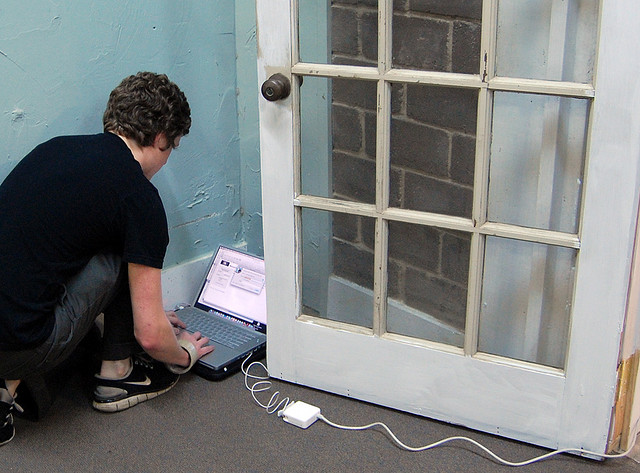The increasing consumption of news on digital platforms is forcing news organizations to rethink their news production cycles and staffing patterns.
Most journalists, like other employees, prefer a normal pattern of life—going to work in the morning and leaving work in the afternoon—because it is conducive to social and familial life and enjoying the cultural amenities that communities have to offer. This preference helped keep afternoon newspapers the standard in the U.S. until 2000, when morning newspapers surpassed afternoon papers for the first time.
Even before that time, however, news production cycles and staffing patterns brought the majority of journalists to the office in the daytime hours, with the number of staff in newsrooms dwindling until morning papers “went to bed” about midnight. Most newsrooms then turned off the lights, and only a few larger metro papers sometimes kept a skeletal crew of police/fire reporters and photographers in the newsroom overnight.
That staffing pattern has changed little since the beginning of the digital age. Today, most newsrooms complete and upload news stories for digital sites before midnight or set electronic release times to out them up about the time the print edition is delivered. Efforts to update stories overnight for digital services is only made for the largest, most important breaking stories.
This is creating a problem in digital news provision, however, because one of the largest spikes in use of online and mobile apps occurs between 6 a.m. and 8 a.m. for most news providers. This means that the news is 8-12 hours stale by the time it is accessed–hardly the immediacy that digital news organizations suggest they provide.
This challenge is now inducing leading news organizations to rethink when and how they staff newsrooms and provide news on digital platforms. They using the better audience metrics that are available to understand when audiences read most of their content on different platforms and reviewing when they publish most of their content on those platforms. The intent is to coordinate peak consumption with publication that keeps material fresh wherever it is accessed.
Pursuing the strategy will be easier for organizations than others. The Guardian, for example, maintains newsrooms in New York, London, and Sydney, so its digital operations can be staffed round the clock to cover international and breaking news, rotating staffing with the movement of the globe so it doesn’t have to maintain significant overnight staffing in all the newsrooms. This follows a pattern set earlier by some international news agencies and news broadcasters.
For metropolitan papers, providing morning digital news consumers with fresh content will require increased overnight staffing or cooperation with other newspapers or news agencies to create means for automatic updates to international and national news on the papers’ digital platforms. Few mid-sized and small news organizations are likely to staff overnight, but may be interested in automatic update services for their digital products from trusted news agencies.
Changes in the hours work takes place will concern journalists unions where overnight local staffing is required and they will be focus on how overnight staff is selected and additional compensation for less desirable work hours.
Nevertheless, the concerns of editors of digital platforms to keep material fresh, increasing demands of consumers for immediacy—especially when they are paying for digital access, and the growing importance of digital subscription revenue all are impelling managers to rethink the ways and times at which news is produced and this will increasingly alter the patterns of staffing within news organizations.
This article was first published on the author’s blog The Media Business.
Credits: Andrew Phelps / Flickr CC
Tags: digital, digital news, Guardian, journalists, News, newsroom, Picard, Robert, working hours, world













































